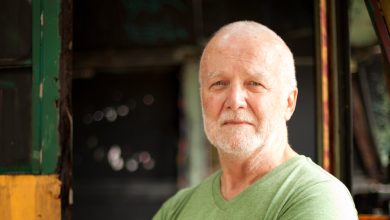Homelessness in California Is Dire. Here’s How You Can Help.

This article is part of Times Opinion’s Holiday Giving Guide 2022. Read more about the guide in a note from Opinion’s editor, Kathleen Kingsbury.
It’s hard not to feel helpless and hopeless about the crisis of homelessness in California. Even though a great deal is being done to address the problem — Gov. Gavin Newsom’s latest budget outlines billions of dollars in spending on interim housing, mental health care and other assistance — none of it seems enough to make a dent: There are now about 174,000 people in the state without a place to live, according to a recent analysis by CalMatters, and the number is rising at an alarming rate, even while California’s overall population has recently declined.
Homelessness as a political issue has also grown charged to the point of seeming intractability. Fox News frequently showcases the dangerous, tent-strewn streets of Los Angeles and San Francisco as a visual shorthand for Biden-era American ruin. And even at the local level we’re stuck in the political mire. It is now beyond obvious that homelessness in California is driven by the state’s precipitous cost of housing, the result of severe, long-term underdevelopment. But even though the grip of NIMBYism has loosened in recent years — there are new laws that limit local communities’ exclusionary policies against building new housing — it remains tremendously difficult to build more places for people to live.
Experts who study and work to alleviate homelessness offered tips on how to help, ranging from the practical to the philosophical and strategic. But their suggestions boiled down to this: You can do something.
“The magnitude of the human suffering in this city is like none we’ve ever seen, so it would be easy to find it so overwhelming that you begin to shut down emotionally because you just don’t know even where to begin,” said Jan Perry, the executive director of Shelter Partnership, which collects and distributes goods to groups supporting homeless people in Los Angeles. But such disengagement is unwarranted, she said. “This problem is so vast” that “there’s plenty of work to go around for everybody, and no one should ask permission. They should just go and help.”
How? Here’s some of what I learned:
Choose a niche. The causes and effects of homelessness are varied, and so are the groups that help the homeless. Some charities focus on addressing people’s immediate needs while others work on long-term political goals. Many are devoted to specific groups — there are charities that provide aid to, among others, young people, veterans, families, single parents with kids, the mentally ill and people in the L.G.B.T.Q. community.
I plan to give money to Covenant House California, which helps to find shelter and support for young people who are homeless, and to Compass Family Services, a well-regarded charity in San Francisco that helps families in need. Experts suggested that donors choose groups whose missions resonate with them, and to stick with those groups over time; long-term engagement will make your impact more tangible.
Donate money, goods and time. Organizations that help the homeless also have immense need for goods — things like clothing, soap, toilet paper, toothpaste and diapers — and for volunteers to manage their collection and distribution.
Some practical notes, though: Don’t go out and buy canned goods or other food items for donation to food banks. Operationally, food banks can do much more with donations of money than of food. Also, homeless people need help throughout the year, not just at the holidays, so if you have the means, consider setting up a recurring donation to an organization you support.
Finally, you may have heard otherwise, but experts told me it’s totally OK to help individual homeless people you meet. Getting someone a hotel room for the night, offering to buy people lunch, giving them gloves and socks, engaging them in conversation: These can all be immensely helpful to those in need.
Address the structural causes of homelessness. Bill Bedrossian, the chief executive of Covenant House California, has been involved in social work since the 1990s, and in the last three years he’s noticed something alarming: A lot of the homeless young people he encounters are working full-time jobs.
“The mantra of our country has always been, ‘Just get a job — if you work 40 hours a week, you can pull yourself up,’” he said. But that’s just not true anymore. Because the cost of housing in California has become so out of reach, “someone living in a cardboard box or a makeshift tiny home under an overpass” might also be working 40 hours a week, Bedrossian said.
In the long run, there is only one way to get out of this problem: We’ve got to build more housing. And the best way to help do that is to become engaged with the thorny local politics of development and housing.
I have written often in support of the YIMBY movement, which seeks to oppose restrictive housing rules, and I plan to give to YIMBY Action, an advocacy group that has helped to push many inclusive housing initiatives through the California Legislature.
But you can also get engaged politically.
When it comes to building low-income housing, “the people who are against it show up” to city council meetings and other forums where local housing decisions are made, said Margot Kushel, who directs the Benioff Homelessness and Housing Initiative at the University of California, San Francisco. “If you are someone who actually says, ‘Yeah, we should build more housing for people who are low income,’” it’s not enough to just not object — you have to show up, too, she said.
Finally, there’s one more very simple thing you can do to help: Recognize homeless people’s humanity.
To experience homelessness is to suffer not just deprivation but also dehumanization. Homeless people “talk a lot about feeling invisible or unrecognized — just completely abandoned or left behind,” Kushel told me. And so even if you don’t have the means to address people’s need for housing and food, you can at least acknowledge their existence and extend to them the kindness you would any other person
This article is part of Times Opinion’s Holiday Giving Guide 2022. The author has no direct connection to the organizations mentioned. If you are interested in the organizations mentioned, please go directly to their websites. Neither the author nor The Times will be able to address queries about the groups or facilitate donation.
Office Hours With Farhad Manjoo
Farhad wants to chat with readers on the phone. If you’re interested in talking to a New York Times columnist about anything that’s on your mind, please fill out this form. Farhad will select a few readers to call.
The Times is committed to publishing a diversity of letters to the editor. We’d like to hear what you think about this or any of our articles. Here are some tips. And here’s our email: [email protected].
Follow The New York Times Opinion section on Facebook, Twitter (@NYTopinion) and Instagram.





